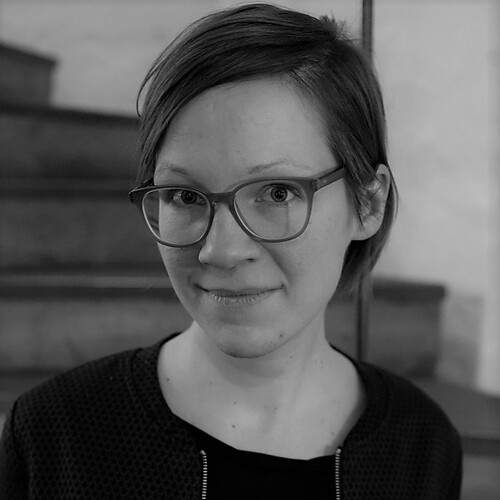Chair
Agnes Hoffmann
»Die zahlreichen und sich durchkreuzenden Aussagen der Tagespresse« – Medienkonkurrenz um 1848 im Spiegel der Satire (Neue Rheinische Zeitung, Der Freischärler, Kladderadatsch)
»The many, overlapping statements of the daily press« – Satirical Portrayals of Media Competition around 1848 (Neue Rheinische Zeitung, Der Freischärler, Fliegende Blätter)
Abstract
During the Vormärz, media competition became an important issue in periodicals and a motor for new forms of writing and publishing strategies. An increasing number of journals covered the political and cultural events between restoration and revolution and competed for the attention of an ever larger readership. At the same time, in the eyes of contemporaries, the currency of reporting and commentary became an important quality criterion for journalism. In this context, 1840s Germany increasingly discussed how the national press faired in comparison with foreign journalism – in 1842, the Deutsche Monatsschrift für Litteratur und öffentliches Leben considered this an »issue of the time« – but there was also great interest in the competition between national, conservative and progressive German publications, as demonstrated, for instance, in a series of article in Die Grenzboten (1843).
My paper examines these historical constellations via the medium of the satirical press. For while the intramedia competition intensified within the closely entangled sphere of the daily press and tendentious publications on the eve of the revolution of 1848, frequently taking sideswipes at other journals and their ideologies, feuilletons and humorist publications presented a satirical take on the combative zeitgeist. Within a media system that was increasingly oriented around competition and thus abetted capitalist dynamics of the accelerated production and exploitation of information, they helped shine a critical light and provided commentary on the structure of the discursive field and its instruments of agitation and emotive direction.

Agnes Hoffmann
Dr. Agnes Hoffmann has been a wissenschaftliche Assistentin in Modern German Literature at the German Department of the University of Basel since 2016.
Tuesday, 15th June 2021 at 15.45 CEST (UTC+2)
Daniela Gretz
The Paradoxical Market Strategies of the »Blätter für die Kunst» [»Papers for Art»] (1892-1919): Irregular Appearance − International Transfer − Transnational Nationalism
Abstract
Founded by Stefan George and edited by Carl August Klein from 1892 to 1919, the »Blätter für die Kunst« [»Papers for Art«], a little self-published literary magazine that was decidedly conceived as an anti-magazine, was in many respects a paradoxical enterprise. Its basic marketing strategy consisted of a staged closure against the market, in which the paratexts on the front page referred on the one hand to the »closed circle of readers invited by the members« and thus to the exclusivity of the magazine, and on the other hand to the display of individual issues in international bookshops in Berlin, Vienna and Paris (later Munich). Parallel to this, launched reviews, translations and author portraits in German-language as well as European newspapers and magazines are intended to draw the attention of a broad public to the endeavour of the exclusive artist community. In addition, the design of the magazine is based on a number of European format models (such as »La Wallonie«, »La Plume«, »Mercure de France«, »L’Ermitage« and »L’Écrits pour l’Art«) and the content focuses on translations by French, English, Belgian, Dutch, Danish and Polish authors who anthologically represent a canon of European aestheticism/symbolism. In this way, the magazine presents itself as part of an international avant-garde and its author and publication networks, and at the same time positions itself on the German market. While simultaneously following and distinguishing itself from the European tradition of aestheticism/symbolism, it also claims to present a »secret Germany« with original contributions by German (young) authors, which, paradoxically, is supposed to advance the (re)invention of German art and nation in its recourse to a transnational and supra-temporal aesthetic.

Daniela Gretz
Daniela Gretz is since 2014 at the University of Cologne; head of the DFG-funded project »Ornamental Constellations: on the Aesthetics of Literary Magazines in the Realm of Modern Mass Media (1880 to 1930)« (together with Nicolas Pethes) as part of the research group »Journal Literature: Rules of Format, Visual Design, Cultures of Reception«.
Tuesday, 15th June 2021 at 15.45 CEST (UTC+2)
Malte Lorenzen
»Die Zukunft« im Kriegszustand. Maximilian Hardens Zeitschrift als Beispiel internationaler Medienkonkurrenz im Ersten Weltkrieg
»The Future« in a State of War. Maximilian Harden’s Journal as an Example of International Media Competition in the First World War
Abstract
If one has a quick flick through the editions of Maxmilian Harden’s weekly journal Die Zukunft published during the First World War, one is soon confronted with countless quotations – including some from the Entente press. This paper focuses on these quotations from the foreign press and shows that Harden’s intensive practice of quotation was a risky business from which he could not refrain however. The aim of these press quotations was to arrive at a truth that is even more difficult to ascertain during wartime. Drawing on sociological research on competitive and conflict situations, the paper ultimately demonstrates that Harden’s occasionally unbridled arrangement of quotations is an example of both international media communication during the First World War and international media competition.

Malte Lorenzen
Researcher as part of SFB1288 »Comparative Practices« from 2017 to 2021 in a project on German-language review newspapers in the First World War; researcher at the University of Bielefeld since April 2021, with a project on the Bielefelder Colloquium Neue Poesie.
Tuesday, 15th June 2021 at 15.45 CEST (UTC+2)
Urte Helduser
Competition and Transfer in the Feuilleton of the Interwar Period: The Viennese Arbeiter-Zeitung between Vienna and Berlin
Abstract
In 1923 Joseph Roth published his first novel Das Spinnennetz in the Viennese Arbeiter-Zeitung. The novel is regarded as an example of the rising importance of this newspaper in the German speaking feuilleton after World War I. The setting of Roth’s novel is not Vienna, but Berlin, the city considered the literary and journalistic center of the Weimar period. It is also the city the Viennese author Roth moves to in 1923 to continue his career as writer and journalist. Roth became known primarily for his novels and his Berlin feuilleton for the Frankfurter Zeitung. Roth’s career may describe the triangle Vienna/Berlin/Frankfurt as competing centers of newspaper feuilletons of the interwar period. The presentation will trace these relationships, with a focus on the Viennese Arbeiter-Zeitung (AZ). The rise of the AZ’s literary feuilleton will be examined in distinction to the competing bourgeois feuilleton of the Wiener Neue Freie Presse and the Frankfurter Zeitung on the one hand, and in relation to the literary center of Berlin on the other. From 1919 until its prohibition in 1934, the AZ developed a highly regarded literary feuilleton characterized by innovative formats and a programmatic orientation toward European and American modernism as well as a new realism. With its strategic orientation, the AZ set itself apart from its bourgeois rival, the Neue Freie Presse, whose feuilleton was anchored above all in the newspaper culture of Viennese modernism around 1900. At the same time, the AZ operates in a network with Berlin’s publishing and newspaper culture. The presentation will analyze the programmatic orientation and strategic development of AZ feuilleton with regard to these transfer relations.

Urte Helduser
Assistant Professor (Akademische Rätin auf Zeit) Philipps-Universität Marburg, Institut für Neuere deutsche Literatur
Tuesday, 15th June 2021 at 15.45 CEST (UTC+2)
Discussion
You are invited to discuss the papers in this section in advance of the live Q&A Session using the comment function below. Please make sure to indicate which paper you wish to comment on.
Feel free to comment on German-language papers either in English or German.


Hello, Urte, Nice to see you in a conference years later and in quite a different perspective. I loved the example of the Berlin criminal and the Viennese housewife – a real feuilleton in itself. Very enjoyable analysis – well done !
Thank you Evanghelia! Yes, very nice to meet you here again! You mentioned fin de siècle and its journal culture yesterday – this might be a keyword to the discussion in this panel today: Fin de Siecle is crucial for the Viennese Feuilleton and it might also lead to the question of the relation (competition?) between Austrian and German newspapers and magazines around 1900 and in the early twentieth century! I am looking forward to discuss this.
Thank you to all speakers for four excellent papers, all very interesting and echoing one another, for example in that periodicals (whether newspapers, concerned with timeliness as discussed yesterday, or “petites revues”) are sites where critical views of mechanisms underlying the press unfold, directly in their pages, as shown through rich and various sources. There also seems to be a tension between the “truth” (journalistic and/or artistic) that each title promoted and the economic and geographic constraints of their respective markets or, as Malte Lorenzen put it, “landscapes.” I look forward to seeing even more connections develop during the discussion!